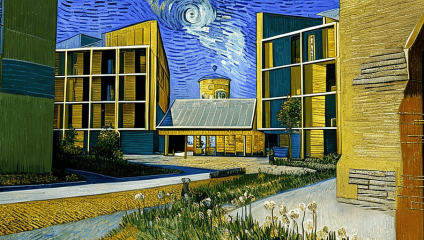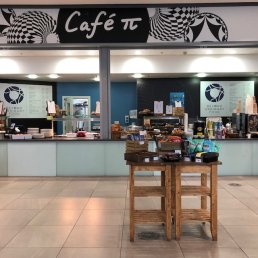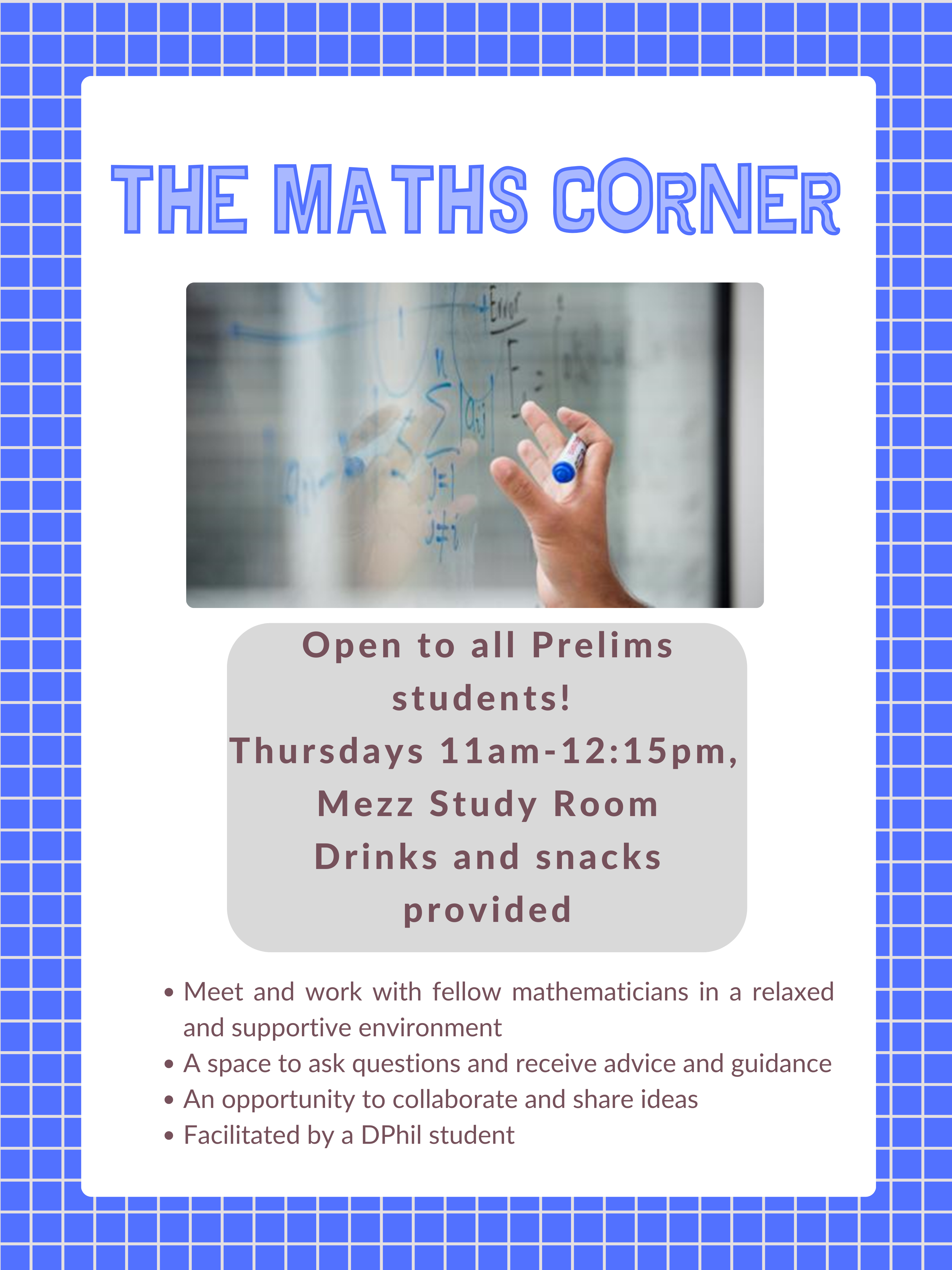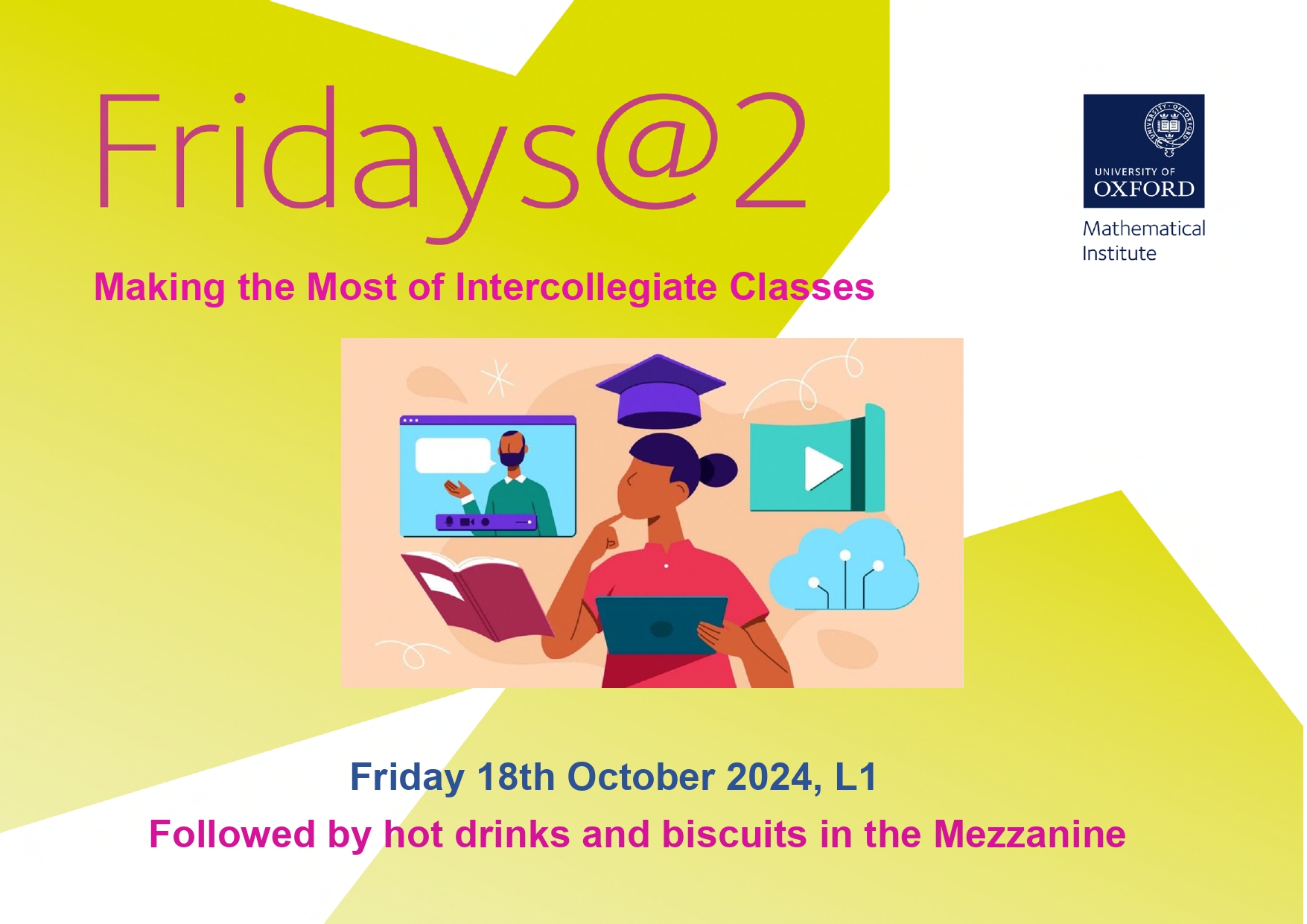 How would you like to feature in our next series of 'Me and My Maths', our social media films about your life and your maths? The previous series and similar series have been very successful with many millions of views in total. All you have to do is answer a few questions which we would send you in advance.
How would you like to feature in our next series of 'Me and My Maths', our social media films about your life and your maths? The previous series and similar series have been very successful with many millions of views in total. All you have to do is answer a few questions which we would send you in advance.
The Disability Advisory Service is seeking support workers for Non-Medical Help (NMH) roles.
They particularly need graduate students to fulfil the following positions:
- Note Taker
- Practical Support Assistant (General/Library/Laboratory/Sighted-Guide)
- Study Assistant
&n
On Wednesday 16th October (Week 1), at 4:30pm in Lecture Theatre 1 of the Andrew Wiles Building, Professor Ofra Magidor will be speaking on 'Infinite Jesters: what can philosophers learn from a puzzle involving infinitely many clowns?’. All Mathematics & Philosophy, Physics & Philosophy, and Computer Science & Philosophy undergraduates are welcome. Although this is a welcome lecture for our first-years, all Philosophy and joint school students and staff members are welcome to attend as well!
The Head of Department, Prof. James Sparks, warmly invites you to the Annual Institute Celebration, to be held at 5.00pm on Monday 21st October (week 2), in Lecture Room 1, Mathematical Institute. We are delighted to announce that Prof. Christl Donnelly will be giving a talk. This will be followed by a presentation of certificates to the winners of the Preliminary Examination and Final Honour School prizes. The evening will conclude with a drinks reception in the Mezzanine.
The University now has 50 full Sanctuary scholarships awarded both last year and this year and through a newly created Oxford Sanctuary Community and University of Sanctuary Committee, we have strengthened relationships with local organisations, such as Asylum Welcome.



 d afternoon treats, alongside various promotions and free pop-ups.
d afternoon treats, alongside various promotions and free pop-ups. 

